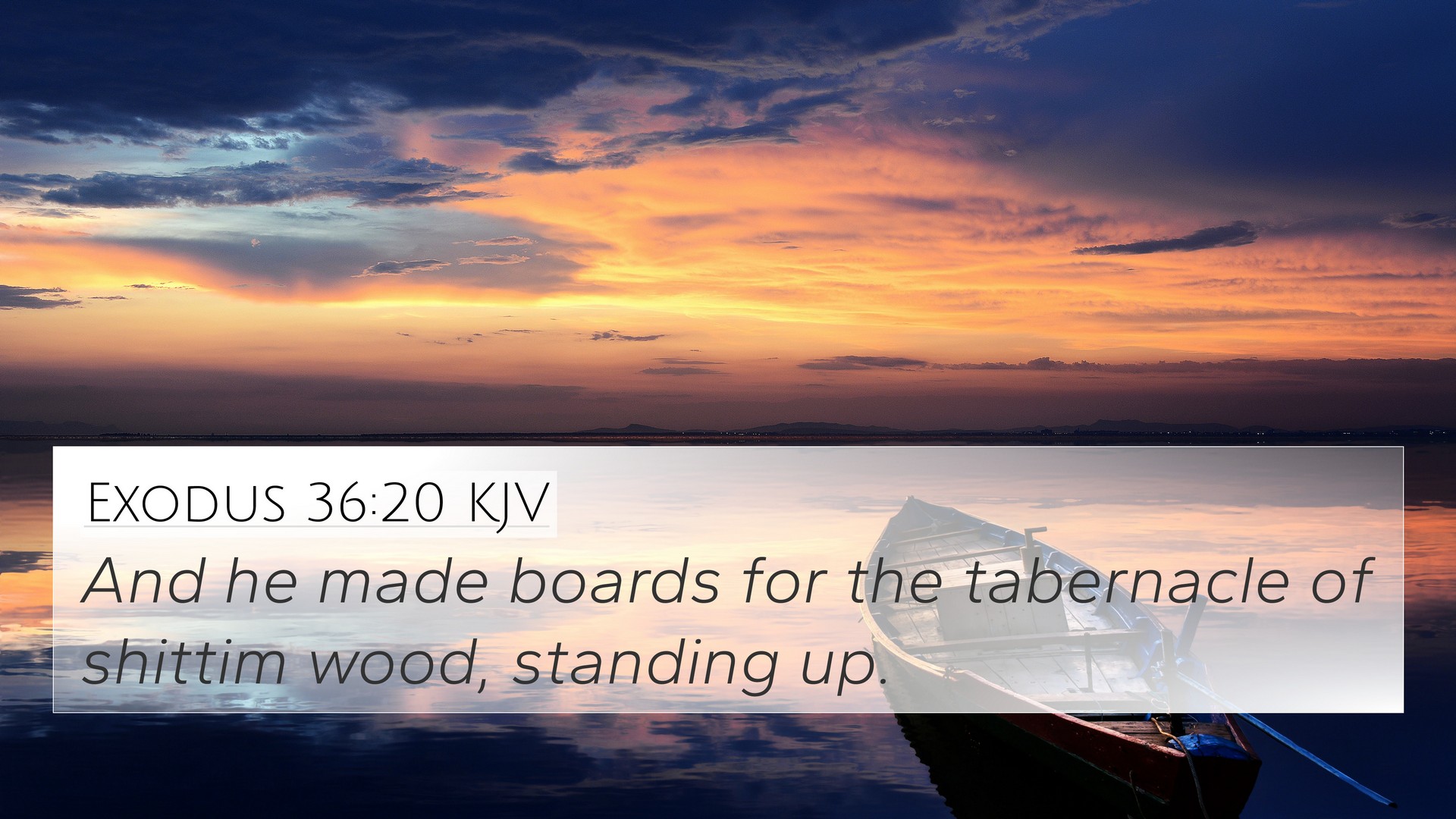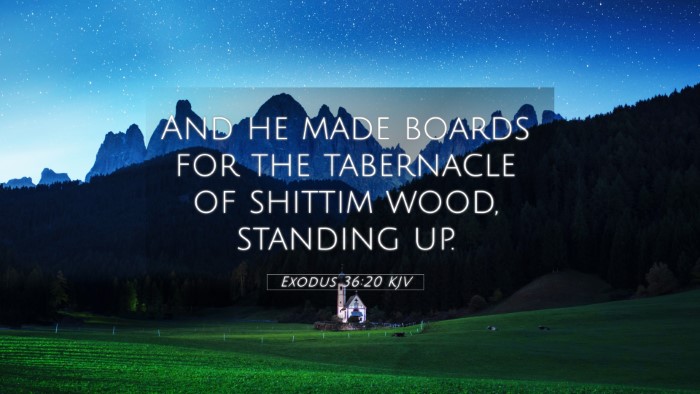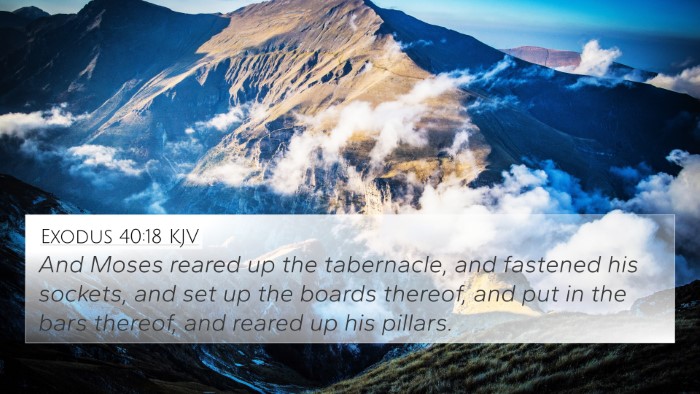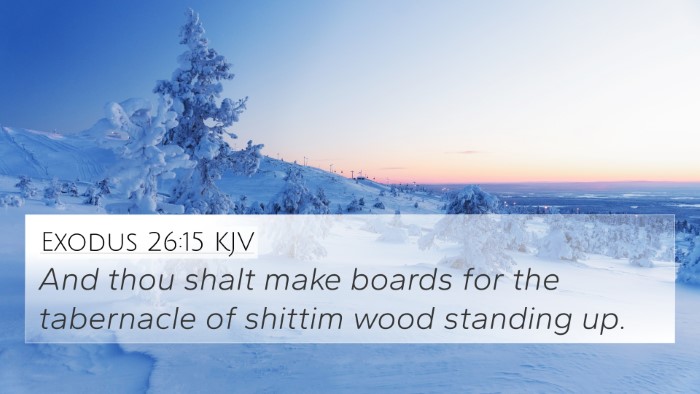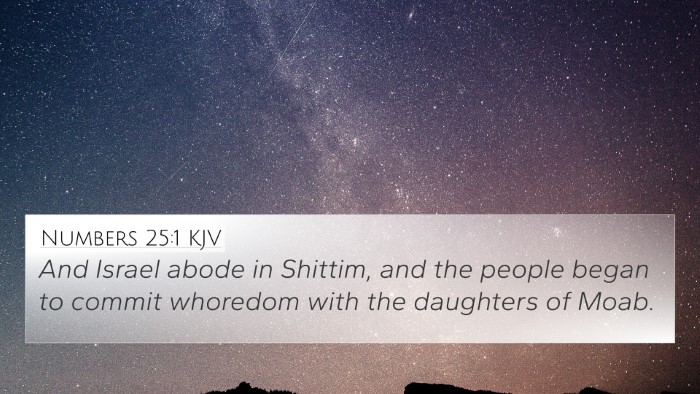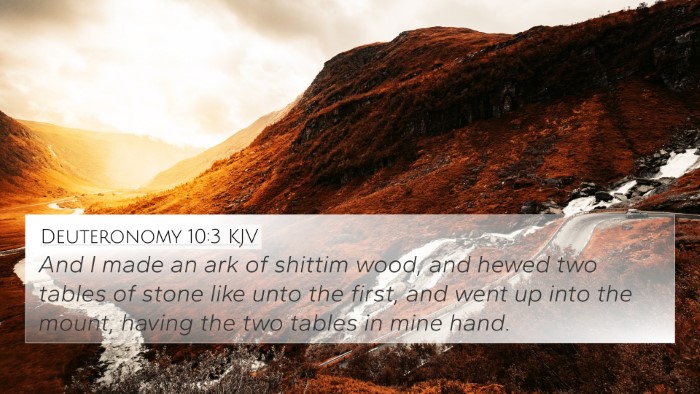Understanding Exodus 36:20
The verse Exodus 36:20 describes a specific aspect of the construction of the Tabernacle, focusing on the boards that formed its structure. This verse reads: "And he made the boards for the tabernacle; twenty boards for the south side southward:" This account highlights the meticulous attention to detail and the significance of every element involved in the sacred construction.
Insights from Public Domain Commentaries
In analyzing Exodus 36:20, several commentaries offer valuable insights:
- Matthew Henry:
Henry emphasizes that the boards of the Tabernacle were made of acacia wood, which signifies strength and durability. He views the Tabernacle as a representation of Christ, and as such, the materials symbolize the nature of Christ's humanity, being strong and enduring.
- Albert Barnes:
Barnes notes the number of boards and their arrangement, illustrating the structure's stability. He suggests that the Tabernacle serves as a type of the church, wherein each believer is akin to a board that supports the spiritual edifice. The use of acacia wood is also seen as a representation of Christ’s incorruption, as it withstands decay.
- Adam Clarke:
Clarke provides a technical description of the boards' dimensions and how they were set up within the Tabernacle. He elevates the understanding of this construction project, noting that each board held a significant role in the overall worship experience. Clarke also draws parallels between the physical structure of the Tabernacle and the spiritual architecture of God’s covenant with Israel.
Significance of the Tabernacle Boards
The boards of the Tabernacle not only provided physical support but also held spiritual symbolism:
- Symbol of Unity: Just as the boards connected to form a unit, believers are called to be united in Christ. This unity is echoed in passages such as 1 Corinthians 12:12-27 which discusses the body of Christ.
- Christ as the Cornerstone: The metaphor of Christ as the cornerstone of the spiritual structure is seen in Ephesians 2:19-22.
- Durability and Strength: The use of acacia wood symbolizes the eternal nature of Christ. This is mirrored in Hebrews 13:8 which proclaims the immutability of Jesus.
Cross-References Connected to Exodus 36:20
To deepen our understanding of Exodus 36:20, we can refer to several related scriptures:
- Exodus 26:15-30 - Provides additional details on the boards and framework of the Tabernacle.
- 1 Kings 6:15-16 - Discusses the construction of Solomon's temple, drawing parallels to the Tabernacle.
- Matthew 7:24-27 - Jesus speaks about building one's house on a rock, which can be seen as a thematic connection to the secure and stable boards of the Tabernacle.
- Hebrews 9:2 - Refers back to the Tabernacle, emphasizing its significance in the context of the New Covenant.
- John 1:14 - The Word becoming flesh and dwelling among us can be linked to the presence of God in the Tabernacle.
- Revelation 21:3 - The idea of God dwelling among His people is a continuation of the theme that starts with the Tabernacle.
- 1 Peter 2:5 - Believers are described as living stones being built into a spiritual house, echoing the imagery of the boards.
Thematic Connections and Insights
Exodus 36:20 establishes a foundational understanding of the relationship between God and His people, as represented by the Tabernacle. This theme resonates throughout Scripture:
- Divine Presence: The concept of God dwelling among His people is a recurring theme in both the Old and New Testaments.
- Spiritual Building Blocks: Just as the boards are critical for the Tabernacle's structure, believers form the church, representing interconnectedness in the faith.
- Preparation for Worship: The initial steps in constructing the Tabernacle illustrate the importance of preparation in approaching God in worship.
Final Thoughts on Biblical Interpretation
Understanding Exodus 36:20 through the lens of these commentaries enriches the study of the verse. It encourages readers to delve deeper into the significance of the Tabernacle and its broader implications in the life of believers. By exploring the connections between Bible verses, we can deepen our understanding of God's word and its application in our lives.
Tools for Bible Cross-Referencing
For those interested in exploring the connections between Bible verses, consider utilizing:
- Bible Concordance: A tool to look up words and find corresponding verses.
- Cross-Reference Bible Study Guides: Resources that outline thematic connections across scriptures.
- Comprehensive Bible Cross-Reference Materials: A variety of printed and digital resources to assist in finding links between verses.
Conclusion
In conclusion, Exodus 36:20 is not just a historical account but a profound statement on the nature of community, worship, and God's enduring promise. Studying this verse encourages a deeper engagement with the text and its implications for today’s believers. The process of identifying and exploring cross-references enhances one’s understanding of the Bible as a whole and invites readers into a richer relationship with God’s word.
